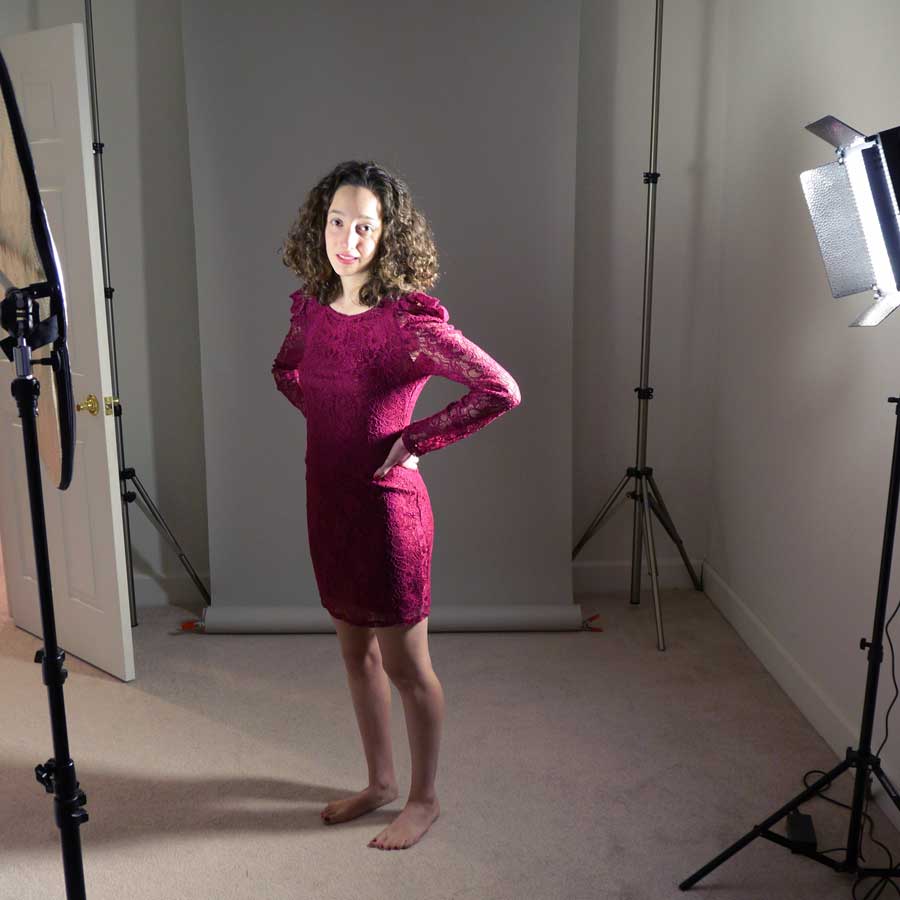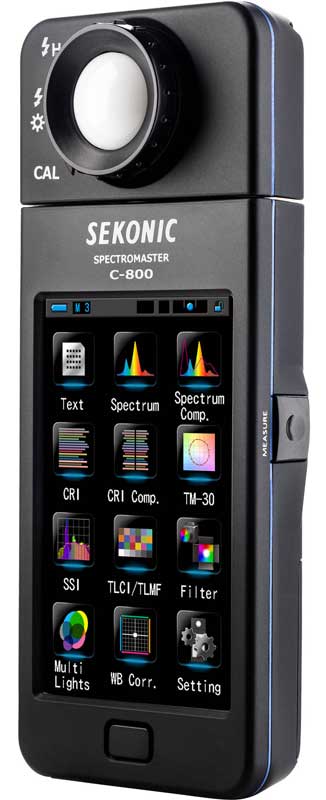Today’s Post by Joe Farace
 LEDs may represent the future of studio lighting but a number of the currently available options come with a caveat or two for the new professional portrait photographer or aspiring pro. In shopping you’ll find that some LED solutions are affordable but may be too physically small for efficient use in a studio or they may be large enough but too expensive for the shooter who just wants to dip their toes into the LED waters.
LEDs may represent the future of studio lighting but a number of the currently available options come with a caveat or two for the new professional portrait photographer or aspiring pro. In shopping you’ll find that some LED solutions are affordable but may be too physically small for efficient use in a studio or they may be large enough but too expensive for the shooter who just wants to dip their toes into the LED waters.
 The (no longer available) Flashpoint 500C LED that I used to make today’s featured portrait of Laura Bachmayer had a power output of 42W producing a real word output of 5250 lux at two feet, 1350 lux at four feet and 530 lux at six feet. Yet, it produced a broad enough light that it can be used for full-length shots. Its color temperature range was rated at between 5300-5900 K. One way to test the true color temperature is by using the (expensive at $1599) Sekonic C-800-U SpectroMaster Spectrometer that’s capable of reading all light sources whether they’re LED, flash, incandescent, HMI, fluorescent or even the natural light spectrum.
The (no longer available) Flashpoint 500C LED that I used to make today’s featured portrait of Laura Bachmayer had a power output of 42W producing a real word output of 5250 lux at two feet, 1350 lux at four feet and 530 lux at six feet. Yet, it produced a broad enough light that it can be used for full-length shots. Its color temperature range was rated at between 5300-5900 K. One way to test the true color temperature is by using the (expensive at $1599) Sekonic C-800-U SpectroMaster Spectrometer that’s capable of reading all light sources whether they’re LED, flash, incandescent, HMI, fluorescent or even the natural light spectrum.
How I made this shot: Today’s image of Ms. Bachmayer was made during our first portrait session together. She was photographed in my 11×15 foot home studio against a 5×7-ft Savage Black Infinity vinyl background that was somewhat supported by my falling apart JTL background stand.
 Lighting for the portrait was provided by a Flashpoint 500C LED with barn doors attached and placed at camera right. Closing down the barn doors on most continuous lights or studio flash with the modeling lights turned on can generate lots of heat. The 500C LED, on the other hand, remained cool. A 30-inch Westcott Basic 5-in-1 Sunlight reflector was placed at camera left serving as fill. You could create a similar looking portrait using any LED light source that produces the minimal output that the Flashpoint light I used.
Lighting for the portrait was provided by a Flashpoint 500C LED with barn doors attached and placed at camera right. Closing down the barn doors on most continuous lights or studio flash with the modeling lights turned on can generate lots of heat. The 500C LED, on the other hand, remained cool. A 30-inch Westcott Basic 5-in-1 Sunlight reflector was placed at camera left serving as fill. You could create a similar looking portrait using any LED light source that produces the minimal output that the Flashpoint light I used.
Camera used for the portrait was my workhorse Canon EOS 60D with an EF-S15-85mm f/3.5-5.6 IS USM lens with an exposure of 1/30 sec at f/5.6 and ISO 800. If you wonder why I’m using what might be considered a “higher than normal” ISO setting for some of my LED portraits, this post will answer that question. Image was retouched and then processed using the Dfine and Color Efex Pro Photoshop-compatible plug-ins.
*If you have a friend (or maybe yourself) who would like to model or wants to be my new muse, please contact me through the Contact page or send me an e-mail at joefarace at gmail dot com. We can schedule a test shoot or interview whichever is more convenient.
The original title of my book Posing for Portrait and Glamour Photography was The ABC’s of Portrait Posing. On this blog there are lots of posts about posing. Use the Search box on the upper right-hand corner and type “posing” to find the appropriate posts.
If you want something more lasting, take a look at my book that’s available new from Amazon for $18.86, with used books starting at $19.18 for some reason. The Kindle version is $28.45 for those who prefer a digital format.
